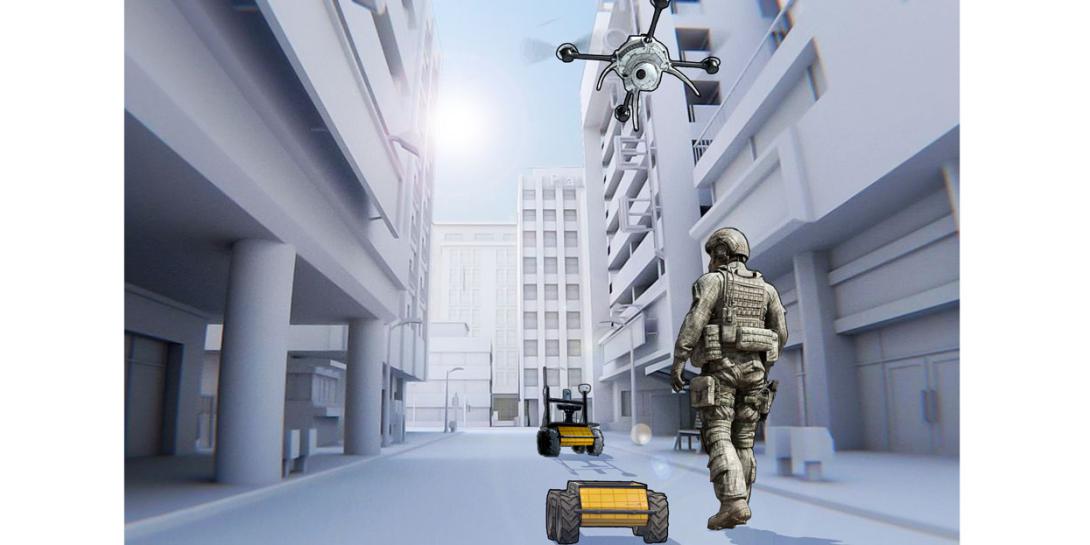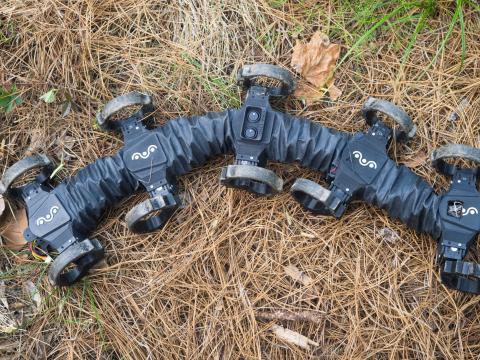Robots Need Tactics, Too
The Defense Advanced Research Projects Agency (DARPA) is moving into the first development phase of its OFFensive Swarm-Enabled Tactics (OFFSET) program, a capability that will empower dismounted troops to control scores of unmanned air and ground vehicles simultaneously. Once fully evolved, the technology will provide small-unit infantry forces with small, unmanned aircraft and ground systems to support diverse missions in urban areas. The program also seeks to integrate modern swarm tactics and leverage emerging technologies in swarm autonomy and human-swarm teaming.
Tall structures, tight spaces and limited line of sight in urban canyons constrain military communications, mobility and tactics. These challenges increase in enemy territory where troops can’t rely on supply chains, infrastructure and previous knowledge of local conditions and potential threats.
However, robots can perform missions such as intelligence, surveillance and reconnaissance and building clearance effectively in these settings. Unmanned air and ground vehicles have proved beneficial, but their value to warfighters would increase vastly if troops could control swarms of 250 or more robotic units in unison.
The prime bottleneck to achieving this goal is not the robotic technology, which is becoming increasingly capable and affordable. Rather, U.S. military forces currently lack the technologies to manage and interact with such swarms and the means to quickly develop and share swarm tactics suitable for application in diverse, evolving urban situations.
To address this issue, Northrop Grumman Corporation will launch its first open architecture testbed as part of the OFFSET program’s first phase. The company leads a team that includes Intelligent Automation Inc. and the University of Central Florida’s Interactive Computing Experiences Research Cluster of Excellence. It is seeking participants to create and test their own swarm-based tactics on the platform.
As a swarm systems integrator, Northrop Grumman will design, develop and deploy a swarm-system, open-based architecture for swarm technologies in both a game-based environment and physical testbed. The team will produce tactics and technologies to test on the architecture and engage a wider development and user audience through rapid technology development exercises known as “swarm sprints.”
DARPA launched the OFFSET program in late 2016. The program seeks to develop and demonstrate more than 100 operationally relevant swarm tactics that groups of unmanned air and/or ground systems numbering more than 100 robots could use. These swarm tactics for large teams of unmanned assets would help improve force protection, firepower and precision affects capabilities. Program developers plan to offer frequent opportunities for engagement with anticipated end users in the U.S. Army and U.S. Marine Corps and would share successfully tested swarm tactics with them on a rolling basis.
To accomplish these goals, OFFSET seeks to develop an active swarm tactics development ecosystem and an open systems architecture to support it. Plans call for an ecosystem and architecture with an advanced human-swarm interface; a real-time, networked virtual environment to support a physics-based swarm tactics game to explore, evolve and evaluate swarm maneuvers; and a community-driven swarm tactics exchange.
The program intends to demonstrate its technologies through frequent live experiments with various unmanned air and ground platforms. Every six months, operational vignettes of progressively increasing complexity will challenge both the swarm architecture and the developed swarm tactics across numerous technological and operational test variables, such as swarm size, proportion of air and ground platforms, and mission duration.
“With the technologies and tactics to be developed under OFFSET, we anticipate achieving a deeper understanding of how large numbers of increasingly autonomous air and ground robots can be leveraged to benefit urban warfighters,” Timothy Chung, DARPA program manager, said.
“We aim to provide the tools to quickly generate swarm tactics, evaluate those swarm tactics for effectiveness and integrate the best swarm tactics into field operations. If we’re successful, this work could also bring entirely new scalable, dynamic capabilities to the battlefield, such as distributed perception, robust and resilient communications, dispersed computing and analytics, and adaptive collective behaviors,” he added.
Vern Boyle, vice president, advanced technologies, Northrop Grumman Mission Systems, believes that cognitive autonomy could transform all defense and security systems. “We are applying cutting-edge technologies in robotics, robot autonomy, machine learning and swarm control to ultimately enhance our contributions to the warfighter,” he said.
To participate in Northrop Grumman’s swarm sprints, visit the Swarm Tactics Exchange Portal.





Comments